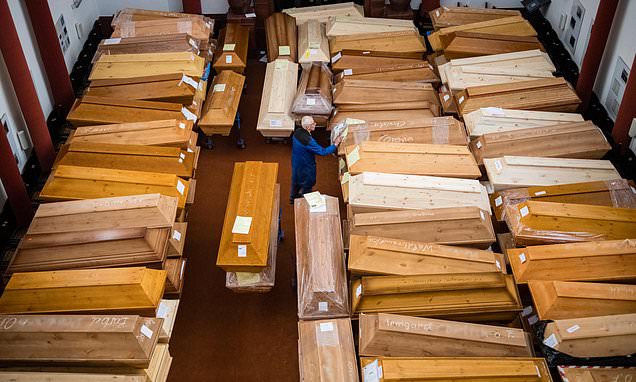Bodies have piled up in Germany’s coronavirus hotspots, including the eastern city Meissen, as the country struggles to bring the virus under control.
Meissen, along with other places across old east Germany that are generally poorer, older and more supportive of a far-right opposed to lockdown are the worst hit by the pandemic in the country.
Many locals believe ‘the collateral damage of lockdowns outweigh the benefits’, but others blamed the soaring deaths for the ignorance of local government that had failed to act quickly.

On Monday, Germany reported 7,141 new cases, bringing the tally to 2,040,659. The death count now stands at 46,633 after recording 214 new deaths today.
‘It’s heartbreaking,’ said Joerg Schaldach, manager of a Meissen crematorium , whose furnaces cremated 1,400 bodies last month, double the figure from December last year.
More than half had died of COVID-19 and Schaldach expects some 1,700 cremations in total this month.
‘People are dying alone in hospital without a loved one holding their hand,’ added Schaldach, standing in the main hall cleared of chairs used for funeral services to make way for caskets.
‘People get just a phone call: ‘deceased’. A farewell at the coffin is not possible, all they get is an urn.’

Like many east German regions that had a relatively mild first wave, Saxony, home to Meissen and a stronghold of the far-right Alternative for Germany (AfD) party, has the second highest 7-day incidence rate in Germany, almost double the national average of 136 per 100,000 people.
The neighbouring eastern state of Thuringia, where the AfD is also popular, is now Germany’s worst hot spot, taking over from Saxony last week.





















